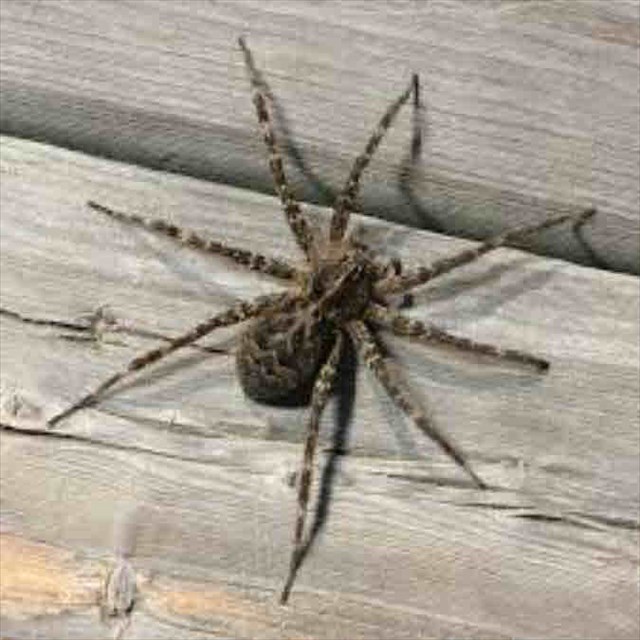INTRODUCTION:
We've had fun putting these caches out and everybody seems to be having fun finding them (unless of course, certain insects are out to "get you"). So, we are putting out more (caches, not insects). The theme this time is INSECTS (as you've already figured out by the title). Some of these you may encounter on your geocaching trips and some of them you may wish you had not. Instead of a steady line of caches down the trail, we thought we'd try something new for us. All are easy puzzle caches and the geoart is one of our favorite insects: the dragonfly - as it eats what annoys us all the most: mosquitoes.
Note: There may NOT be cell phone service in some areas of the K & P Trail.
TRANSPORTATION:
The K&P trail is a single lane dirt road with gravel on it in some areas. You can hike it, bike it or drive it albeit very slowly. When placing the caches we never drove over 15 km/hr. Mostly it was at about 10 km/hr. Just when you think it's smooth going a huge puddle hole will "get" you. On bikes, you will have no trouble except if you go out after heavy rain (or during rainfall) as it will be muddy in areas. On foot, be aware that there are very few houses along the way - so don't go alone. Safety in numbers. There are some pretty streams along the way, wetlands and Graham Lake just North of Lavant Station (a nice place for a picnic lunch).
INSECT:
Dock Spider
Dock spiders belong to the family Pisauridae, which are closely related to wolf spiders (family LycosidaeN). Both of these families of spiders show interesting behaviours towards their young (‘spiderlings’). Females lay eggs within a silken egg sac, and this sac is carried around by the female4 until it is time for the young to hatch. Wolf spiders attach their egg sacs to the end of their abdomen, and when the spiderlings hatch they are carried around on the mother’s5 abdomen before embarking on a solitary life. Pisaurid females, however, hold the egg sacs by their fangs, and it is carried underneath0 the female’s body – it looks like the females are carrying around a big wad of cotton by their mouths. Pisaurids are commonly known as nursery-web spiders, as females build a silken, tent-like ‘nursery’ for their spiderlings. Upon hatching, the young spiders live in a protected place, typically6 spun in and among grasses, low-growing vegetation,. or between rocks around the margins of water.
Two species, Dolomedes tenebrosus and Dolomedes scriptus are the common ‘dock spiders3’. Unfortunately it is difficult to tell these two species apart, without a microscope, forceps, and expertise. Both species are brownish-grey in colour, with black4 and light brown markings (‘chevrons’) on their abdomen. These spiders, especially the full-grown females, are the largest (native) spider species in Canada, and their body (including legs) can almost fill your palm – the body length (i.e., not including6 legs) of mature females can easily exceed 2 cm. But do not worry! These spiders do not bite people, and would rather eat land-dwelling and aquatic insects, and they are knownW to catch small minnows, which is the reason for their other common name, the fishing spider. The spider will wait with its front legs resting0 in the water, and when small tadpoles or fish come near, the vibrations alert the spider to its lunch. An invertebrate eating a vertebrate is not a common7 occurrence in the animal kingdom!
Dock spiders, as their name suggests, tend to be associated with the margins6 of lakes, ponds, swamps and rivers, where they typically sit motionless on tree trunks, rocks, boats, and docks. However, individuals are known to travel some distance from water, and are the reason for many alarmed people describing hairy monsters in their basements. This mainly occurs in the autumn4 months when the spiders are searching for a warm place to spend the winter (under stones, leaves, or bark, or inside buildings). After spending2 a winter as an immature spider, dock spiders typically mature and mate in the spring, with females carrying egg sacs for a few weeks, before the young hatch in the nursery.. Females can then go on to produce a second, or sometimes a third egg sac before the end of cottage season. One egg sac can produce over 1,0000 spiderlings.
Without a doubt, dock spiders are impressive animals and although not small and obscure, they are still worthy of study. They should be considered friends of cottagers, boaters5 and home-owners. I encourage you to watch them, observe their behaviours, and marvel at their size – it’s especially fun to do this when sitting down at the dock, having3 a glass of your favourite beverage, watching when the evening comes….

Dock Spider

Dock Spiderlings